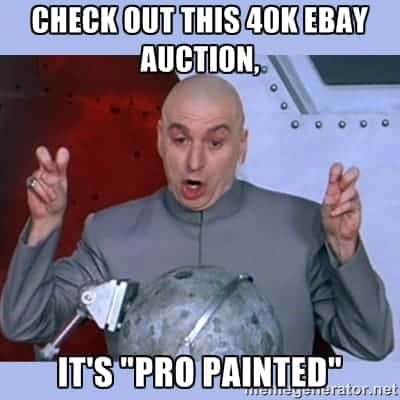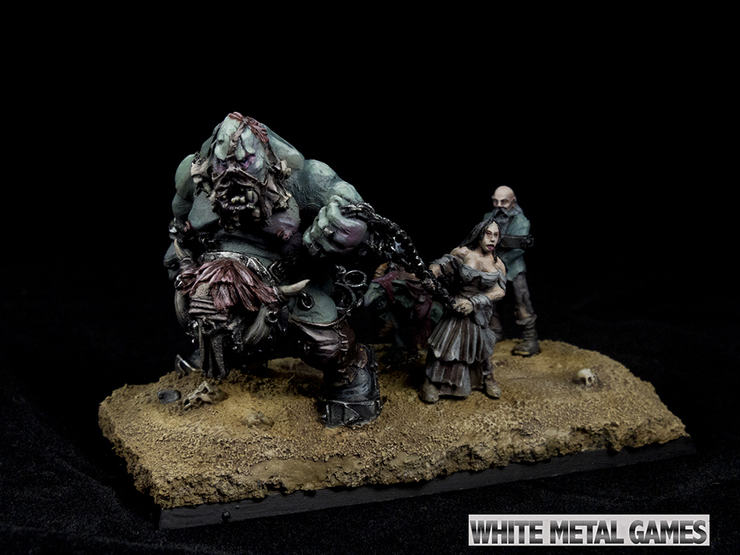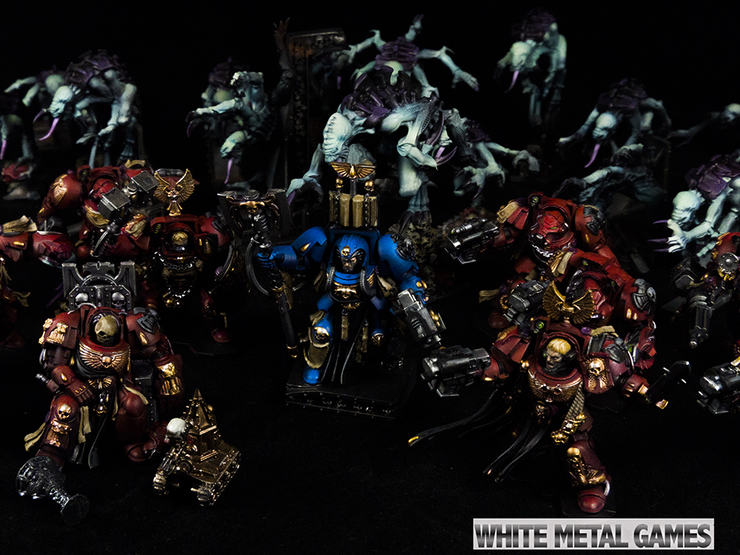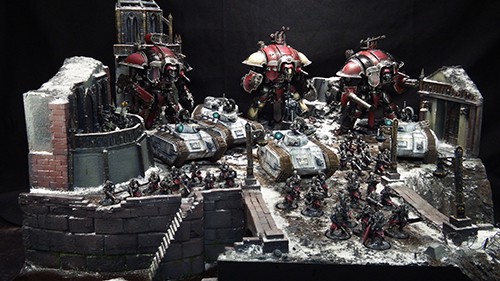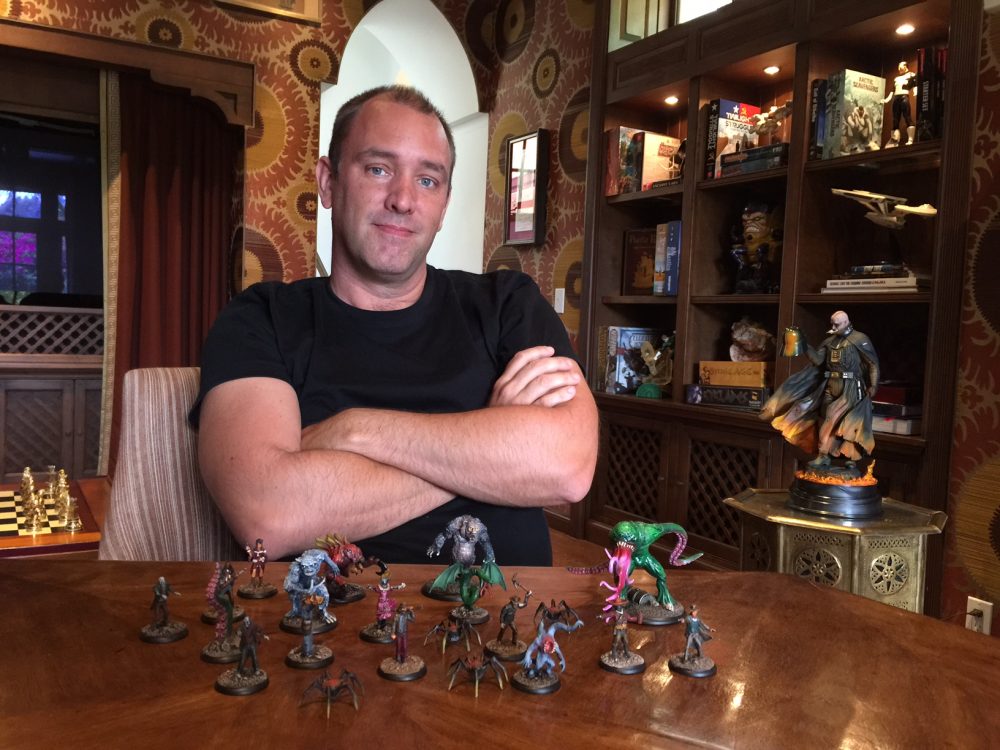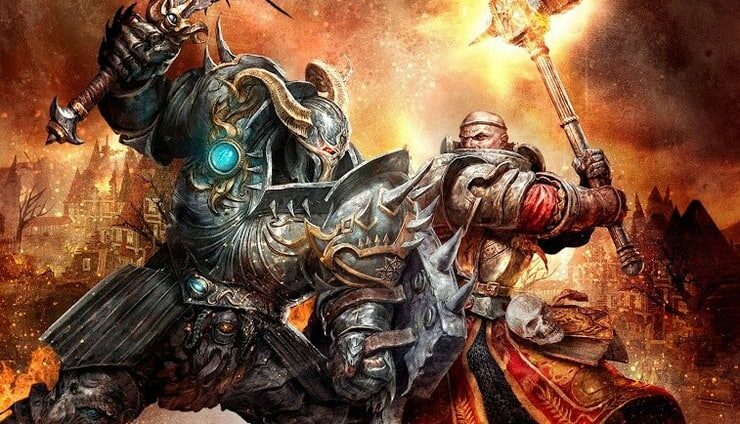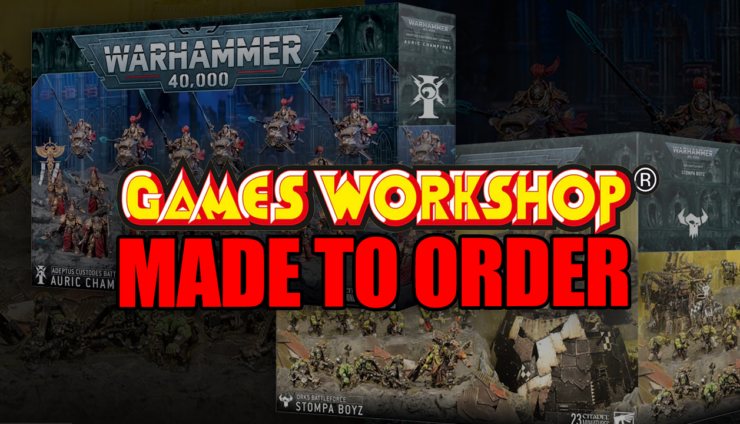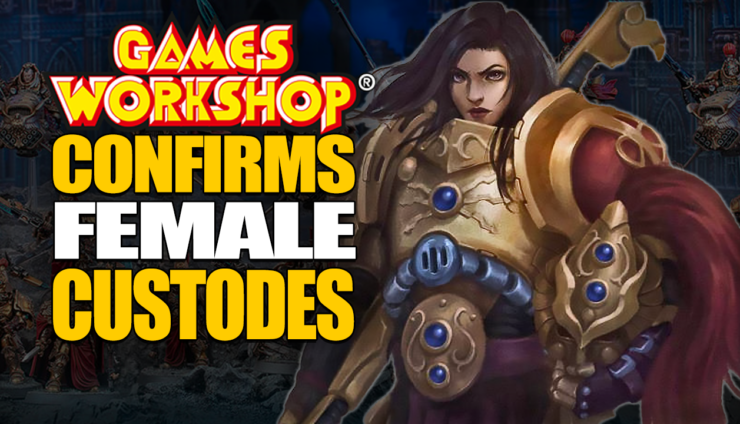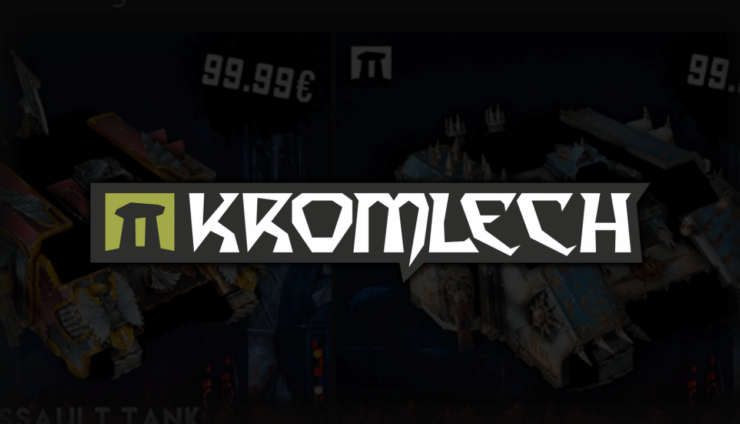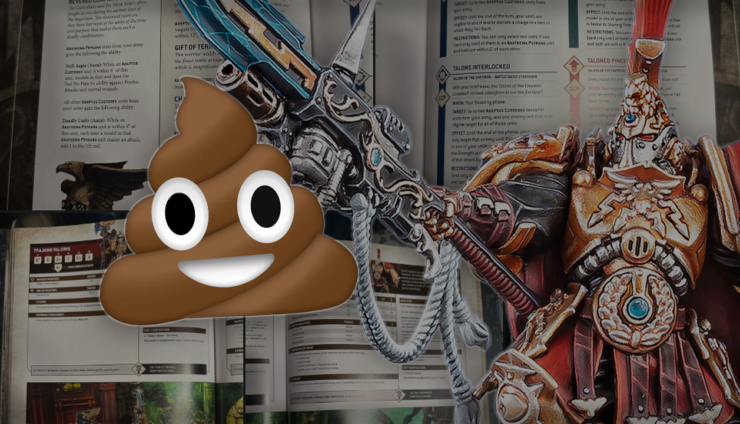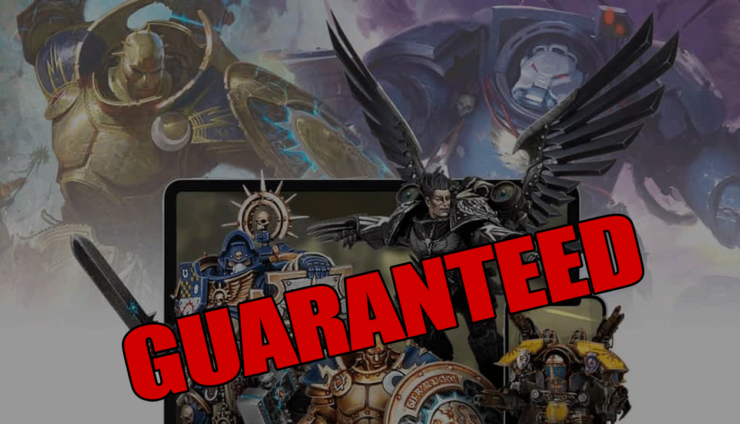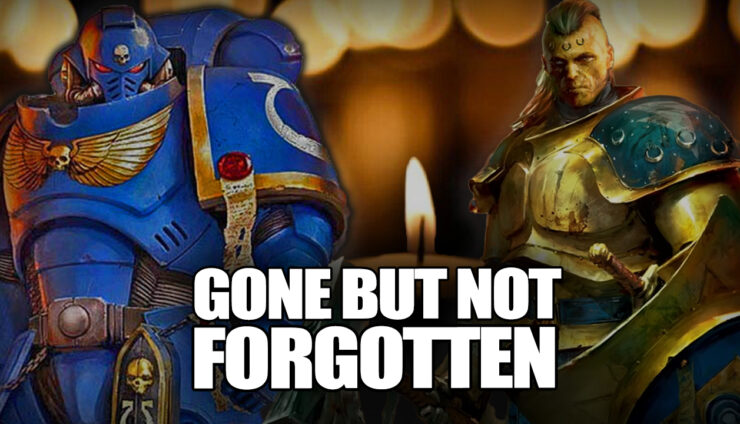Be careful what you wish for. One painter explains to you what it’s really like to paint for a living.
“I’m out! Like all the way out,like I’m selling everything.”
This is what a recent consignor told me when I took in his inventory. He was previously a miniature painter, and it’s worth noting a pretty good one. Looking at the miniatures close up that he intended for me to sell on his behalf on eBay, I was impressed with the caliber of his work. But I couldn’t help thinking to myself that this could be me.
Hey guys! Caleb with White Metal Games here, with a few tips and suggestions for the would be ‘pro-painter’.
A few months ago I lost a job. It was a small start up company, and I knew the risks going in. After the job was gone, while looking for other work to hold me down (I’m still looking I might add), I was fortunate in that I had a few new clients contact me about some long-term projects with good budgets. I knocked those projects out, and then the clients had other projects for me. Rinse and repeat. And thus I found myself painting miniatures full time. I’ve had a commission service for many years, but it’s always been a part-time extra money kind of gig. This was the first time I was actually relying on it as a source of primary income.
While painting 8 to 12 hours a day might seem like a fun idea, there’s a lot of things you really don’t think about it until you are thrust into it. Something fun became the primary way I was putting bread on the table, so to speak.
First off, let’s be clear that when I describe ‘pro-painting’ it may not be what you think of as pro painting. At some point in time the gaming community decided that pro painting was a representation of levels, such as the quality of the miniature presented. If pro-painted is on a scale of 1-10, it’s in the 7+ range. Or at least, that’s what the community says.
A good example of a ‘pro-painted’ project from our studio, aka ‘Gold’ level on our website.
I think pro-painters should take back the term ‘pro-painted’ and own it. Rather than thinking of a pro painter as a Rembrandt or da Vinci, I would propose the pro painter is more like a plumber or carpenter. It’s not that I can’t fix a sink. It’s that it will take me twice as long as ‘Joe the Plumber’, and I value my time more than that. Really it boils down to time. You’re paying the pro-painter because time is a commodity. You either don’t have the time, or don’t want to put in the hours, so you pay them to be your proxy painter.
I get it! Trust me. At the end of a long day, you’re tired. You’ve got work/school/kids . . . sometimes all three. After all that is done you don’t want to spend your only hour to yourself all day painting, another tiring activity. You’d rather just pay someone to do it. There’s no shame in this. I feel no shame when I call the electrician to help me with a grounding issue, as I don’t want to get electrocuted. Why should you feel bad about paying someone to paint your minis? Trust me, if I had made close to what you make, I’d be okay with paying someone else to paint my stuff. But I have a lot of clients email me and the first thing they say is “I paint minis too, but I’m so busy . . .. ” STOP APOLOGIZING! You are part of a very busy world, and if you weren’t so busy, I’d be out of business!
As far as quality goes, most of the miniatures I paint are only slightly above table top quality. That’s because I’ve realized over time that there’s a sweet spot for painting. For me that sweet spot is churning out models quickly and efficiently. In order to do that I have to limit the amount of detail I apply to any individual model. I have levels of paining of course, for clients that prefer a higher echelon of work to be performed, but for the majority of my client’s the level of painting I achieve is exactly what they’re looking for. And I keep the levels simple. In fact, I planning to go back and redo my level again, calling them simply Good, Better, Best to keep it easy.
You won’t see my work at Crystal Brush or Golden Demon . But that’s not the goal I’m working towards. My goal is to satisfy my clients. And as long as I’m doing that, and earning a steady income, I consider myself a pro painter in the very sense of the word.
So, as such, even though I’ve only been a full-time painter for only the last six months, a couple of things have occurred to me that I want to share with you. Think of these as simple suggestions, but also a cautionary tale. If you want to become a ‘pro-painter’ these are some of the lessons/challenges you may come to face.
Tip One: Put in the Work
Just because you’re working at home doesn’t mean you get to take it easy and play video games all day. Yes, I have no commute anymore and that saves me a lot of time, but I use that time for work. My wife goes to work at 7:30 and that’s when I start my day. It usually ends about 10 or so. Let me walk you through a typical workday (in no particular order)
- Responding to clients (current and potential) via email: 2-3 hours daily.
- Updating social media: 1-2 hours daily
- Photographing models/terrain/lots, etc.: 1-2 hours daily
- Editing photos for media applications: 30 minutes -1 hour daily
- Shipping items sold: 8 hours weekly
- Adding new auctions and lots to my eBay store: 1-2 hours daily, 4-5 hours with new consignors
- Updating website: daily as needed
- Painting miniatures: 6-8 hours daily
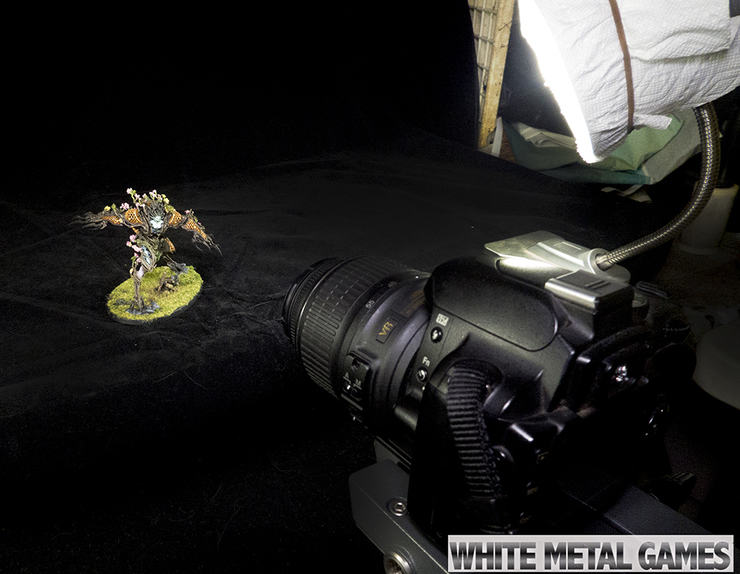
Shooting pictures of minis takes more time than you think when you churn our thousands of miniatures a year!
And that’s just on a typical day, there are plenty of days where I’ll spend 3 to 4 hours airbrushing to apply base colors on a new project, or several hours just on assembly of a project. Recently I sold several copies of Shadows of Brimstone and each game took about 4 hours to assemble. And that’s before the first drop of paint ever hits the model!
Looking over the list, you’re see that my time is split pretty evenly between painting and everything else. Over time it’s actually harder and harder to make painting the priority. I find that the more social media I do, the better the results I get. So I need to definitely spend more time blogging/doing videos/tutorials, etc. But the problem is it ALL chews into my work day, which is already about 12-14 hours daily. Sound like a fun day to you?
Tip Two: Pants cannot be underestimated.
For the first month or so when I was working at home I stayed in my PJs all day. It was just more convenient . I wasn’t going anywhere, so I didn’t really see a point to put on proper clothes, however, over time the way I felt about myself started to slowly shift. I felt less like a professional working at home and more like a high school kid pretending to be sick. I found on the mornings where I got up, shaved, put on a proper pair pants and started my day this way my progress with usually more conducive, and I felt better about it at the end of the day. The point is think of yourself as a home based professional that works out of a home studio with no overhead. Require yourself to come to work on time and in some standard of uniform, even if that uniform is shorts, socks, and a T-shirt.
Tip Three: Exercise and Sunlight makes Jack a Happy Boy!
I found that in the first few months of being a stay at home painter my weight went up by more than a few pounds. While I’ve often had some form of desk job where I set on my butt most of the day, I find that at home I can stay seated for hours on end without getting up if I’m in the painting groove.

I started riding my wife’s exercise bike in the morning, every other day. And while I hated it, I have to admit it gave me a little bit more energy every day. Some gamers are blessed with an incredibly high metabolism. For the rest of us though, you’re going to have to make it a point to get some exercise. My doctor said my vitamin D was low too (from lack of sunlight!) So maybe take a walk once a day, or at least take some supplements.
Tip Four: Expand your list of services.
As I mentioned at the start of this blog post, I offer consignment. Consignment is when people bring me their old models, books, and gaming materials, and I sell them in my Ebay store. I take a percentage of the profit, but the major advantage for the consignor is that they don’t have to do any of the work. They just hand me their boxes and I take care of everything, from listing to shipping. If there’s a problem with an order, I deal with it. If something gets lost in the mail, I deal with it. If a model gets returned, I deal with it. The consignor is paying for me to make this my problem. And while it may seem like easy money at first, Ebay and Paypal take a total of 14% of my sales, so in the end I make about 30% profit. So if I spend 30 hours on a consignment and sell $1000 in product, I make a whopping $333, or just over $11 an hour. Not exactly the windfall it sounded like at first, eh?
the mail, I deal with it. If a model gets returned, I deal with it. The consignor is paying for me to make this my problem. And while it may seem like easy money at first, Ebay and Paypal take a total of 14% of my sales, so in the end I make about 30% profit. So if I spend 30 hours on a consignment and sell $1000 in product, I make a whopping $333, or just over $11 an hour. Not exactly the windfall it sounded like at first, eh?
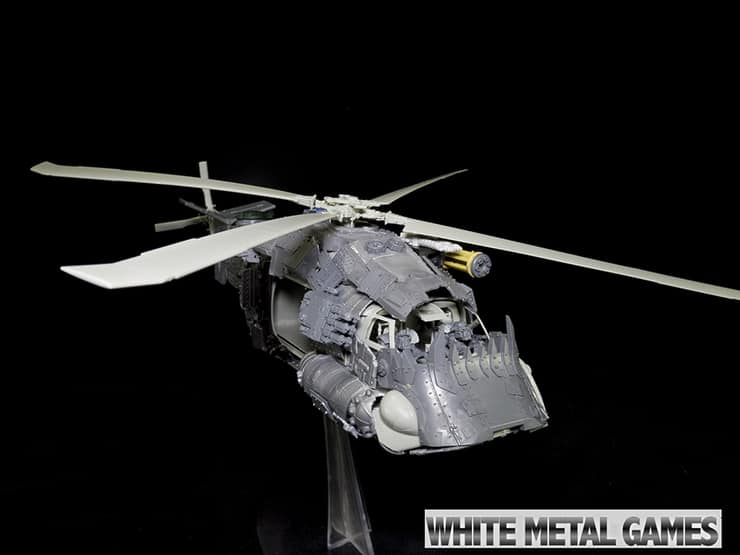
Even if you like to paint, you can hire a pro to kit bash your personal models, like this War Choppa!
But it’s another revenue stream I depend on and it’s a great way to make money between commissions. One other advantage the consignor gets to take advantage of is my eBay stores track record (which is sitting at 100%), which I’ve been building up for the better part of 10 years. With great feedback the consignor gets to take advantage of an immediate customer base. Although eBay is a buyers market, the nature of the seller plays a major impact in the sale. If I find a model I really like, but the seller has a shitty track record, poor feedback scores, and lots of negative comments, then I won’t buy it. That’s the beauty of consignment; I’ve already built up the store and all they have to do is bring their product to me to sell.
Tip 5: Back Burner your personal projects.
95% of my time now is spent focusing on client commissions. I’m assembling and painting their models. My own personal projects get put back up on the shelf more often than not. Once in a while I’ll bring one out and work on it for a few hours. But generally speaking I’m not an active gamer anymore. Because of this any project I make is inevitably bound to be sold on eBay. So it’s hard to think of your own personal projects as personal projects anymore; you begin to think of them as product you’re developing for sale.
I rarely attend game nights, or conventions. I’m not a competitive game and I don’t really think about the meta-very much (unless I’m building an army to sell). I’m sure there are a lot of miniature painters out there that paint what they want and then sell it for profit and that’s great, for them. What I found is that clients will always pay more for what they want versus a product you develop. Case in point, about a year ago I began developing and Necron unbound army they could count as Orks.
Once the Army was completed, I went to sell it on eBay. For an army like this, kustom and kit bashed and HUGE I would’ve traditionally charged around $4500. However ultimately I got around $2700 by the time it was all said and done, which covered the parts and some labor. And while three grand isn’t bad, it is nearly what I think we would’ve made on it if a client has requested the project. It’s a great portfolio builder, but not a great profit margin.
This often times discourages me from tackling new projects versus working on a client project. Nine times out of 10 the client project will be more profitable. What I do now is I only do personal projects when I have a spare minute, and that’s becoming increasingly spare.
Then again if I never did personal projects, I wouldn’t get to make cool stuff like this!

This personal project, a Slaanesh Daemon Princess, sat for YEARS in my case before I finally found time to paint her.
Tip Six: Big Brother wants a slice!
Inevitably you were going to have to pay taxes on what you do. If you grow your business to the point that it is profitable, as we all hope we will, then you’re going to owe part of everything you make the big brother. That means you’re going to have to take out a federal tax ID number, File quarterly taxes, and think about whether or not you want employees and declare every expense.

Well this can be a good thing, it also puts things in perspective. My business lost money the first three years of operation. Mostly that’s because every dollar is going back into the business. On the upside of things, almost everything I buy, from books to dice, is either a write off or a business expense (books = research materials, glue and paint = cogs, etc.)
On the other hand, my taxes take FOREVER! I have to document every sale, every transaction, every bit of income I make all year. Thank god for Quickbooks, but even then I spend hours a week bookkeeping! If doing your own taxes isn’t for you, well, maybe owning your own business isn’t either.
The good news is most miniature commission artists fly under the radar . . . cash only and local clients. But remember, if you make over $30k a year, even Paypal has to report it! So, your stealth days are numbered if you are a successful painter.
Tip Seven: More painters can be a turn off to clients due to a lack of inconsistency
Over the past few years I’ve employed a variety of painters, whether they be long-distance painters that I connected with through email or rather they be local painters that I tried to work with on projects. In 90% of cases the painters work out for a few months and then they bounce. That’s because many of them realize painting isn’t for them. There’s too little pay, or they can’t make it work with their school/work/home schedule. Their personal projects get put on the back burner, inevitably, or worse they don’t and client orders fall behind. They have a hard time following direction, or painting in a style different than their own.
It’s burnout, and it’s common among painters. It’s what separates hobbyists from pro-painters. There are days I don’t feel like painting, but to keep my quotas I have to get up and paint every single day. It’s not an option. Models aren’t going to paint themselves.
Tip Eight: Rinse and Repeat
You no longer have the luxury of just being an artist now you are a craftsmen who deals in the miniature painting medium. Clients will have requests and if you’re smart you’ll honor them. For example a recent client requested very clean lines on his models. It wasn’t my forte, nor what is my preference, but it’s what he wanted so if I wanted the business I was gonna have to honor it.

Take notes on every project in case you (hopefully) need to duplicate your own work over and over again!
Furthermore, are you going to be able to duplicate the project over and over again if multiple clients see a picture of your models and request them to ‘look just like these other ones you did!’ I recently I sold three Chaos Lords on juggernauts on eBay. Each client after the proxy client requested I duplicate the work from the previous order. I had to duplicate the technique the paint colors and even the same bits. Do you have an inventory they can support that? Do you keep detail paint notes so that you can easily find the colors used on the last project? Do you have a consistent workflow for churning out models quickly?
Conclusion/Summary:
Well I could go on and on about this topic for days, I think you’re beginning to see the point. I don’t think my work will ever be considered ‘Pro-Painted’ by a measured standard commiserate with what you see on Crystal brush. But I don’t think of myself that way. I think of myself as a blue-collar painter.
If you think of yourself that way too, maybe you have what it takes to be a pro-painter. But don’t take my word for it. Here is one of my recent satisfied customers, sitting proudly behind some models I painted up for him, including a custom Man Bear Pig I made just for him.
Happy wargaming!
Caleb Dillon, White Metal Games
If you enjoyed this article be sure to like it, share it with others, and subscribe! We even offer a discount if you do!
